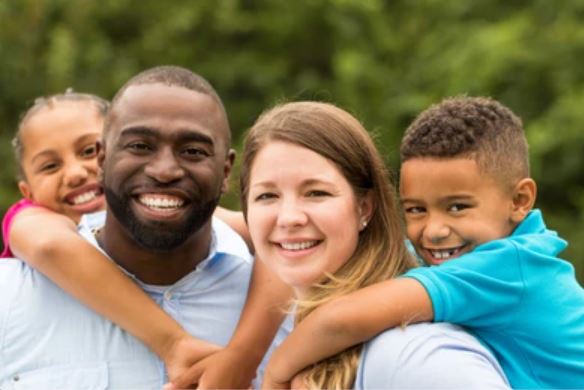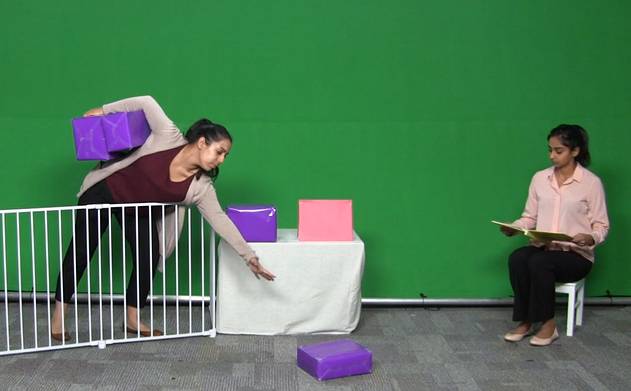Face Kinds Individuation
How do infants individuate human faces?
This project aims to understand how young infants discern and recognize different types of faces based on traits such as race, gender, personal identity, and age. Through an interactive reaching game created for this project, infants have the opportunity to form expectations about how many individual faces are hidden within a box. We are interested in whether there are differences in the type of traits that infants may be more focused on compared to others and if there are any age-related changes between 1 and 2 years of age. Our previous work shows that 1- and 2-year-old infants make distinctions between human and non-human objects. Interestingly, we found an age-related change in distinctions when female and male looking faces are shown. Specifically we have found that 2-year-old infants are more likely to expect 2 faces are involved in the game when they see a female face followed by a male face; however 1-year-old infants were not found to make any clear distinctions between these types of faces. For the full paper go to our publications page.
Study Status
Data collection is finished for this study. We are currently working on processing and analyzing the data.
ManyBabies4

Do infants prefer prosocial characters over antisocial ones?
This study explores infants’ social evaluation of others. Specifically, we are investigating whether infants evaluate others’ actions as praiseworthy or blameworthy. It is performed in conjunction with ManyBabies, an international collaborative project for replication and best practices in developmental psychology research. We aim to replicate the helping/hindering study conducted by Hamlin, Wynn, & Bloom, 2007, which is the focus of the ManyBabies4 project. Infants sit on their caregiver’s lap and view video clips with prosocial and antisocial characters. Caregivers also do a book-reading activity with their baby and fill out a series of surveys.
Study Status
Data collection is finished for this study. The ManyBabies team is working on processing and analyzing the data.
Multiracial Families

Do Multiracial children prefer faces of familiar races?
The purpose of this study is to test whether Multiracial children ages 4-8 years old demonstrate the own-race bias (ORB), observed when people can differentiate among faces of their “own-race” but not faces of less familiar racial outgroups, and measure caregivers’ influence on children’s racial representations through implicit and explicit measures of racial socialization.
Study Status
We will be recruiting participants in the coming months. We are looking for Multiracial children 4-8 years of age who were born in the United States. Both the children and parents will complete face memory tasks in addition to other activities and surveys.
RuTH-E: Refusal to Help – Eye Tracking

Are toddlers sensitive to others needing help?
This study investigates the influence of racial group membership on children’s prosocial expectations. Specifically, we want to know whether young children are sensitive to others’ intention of helping or refusing to help, and whether they expect helping actions to vary based on observing members of different groups. We want to see if young children will display their prosocial expectation through visual attention tasks using eye tracking equipment.
Study Status
We are currently recruiting participants! We are looking for toddlers who are 10-24 months of age. Toddlers will sit in a high chair (or their caregiver’s lap) and view video clips of two people interacting with each other in neutral, helping, or not-helping manners.
Show Me

What associations do toddlers have with the words Mommy/Daddy and different faces?
This study investigates the relationship between knowledge of kinship labels and different types of faces that toddlers may or may not have familiarity with. We are curious if toddlers systematically associate a particular face with the label of “Mommy” or “Daddy,” not because we’re making assumptions about family structure or terms used at home but because we’re interested in understanding the associations they’ve formed with those specific words.
Study Status
We are currently recruiting participants! We are looking for toddlers who are 11-26 months of age. Toddlers will sit on their caregiver’s lap and be invited to make a choice when presented with two objects or faces.

